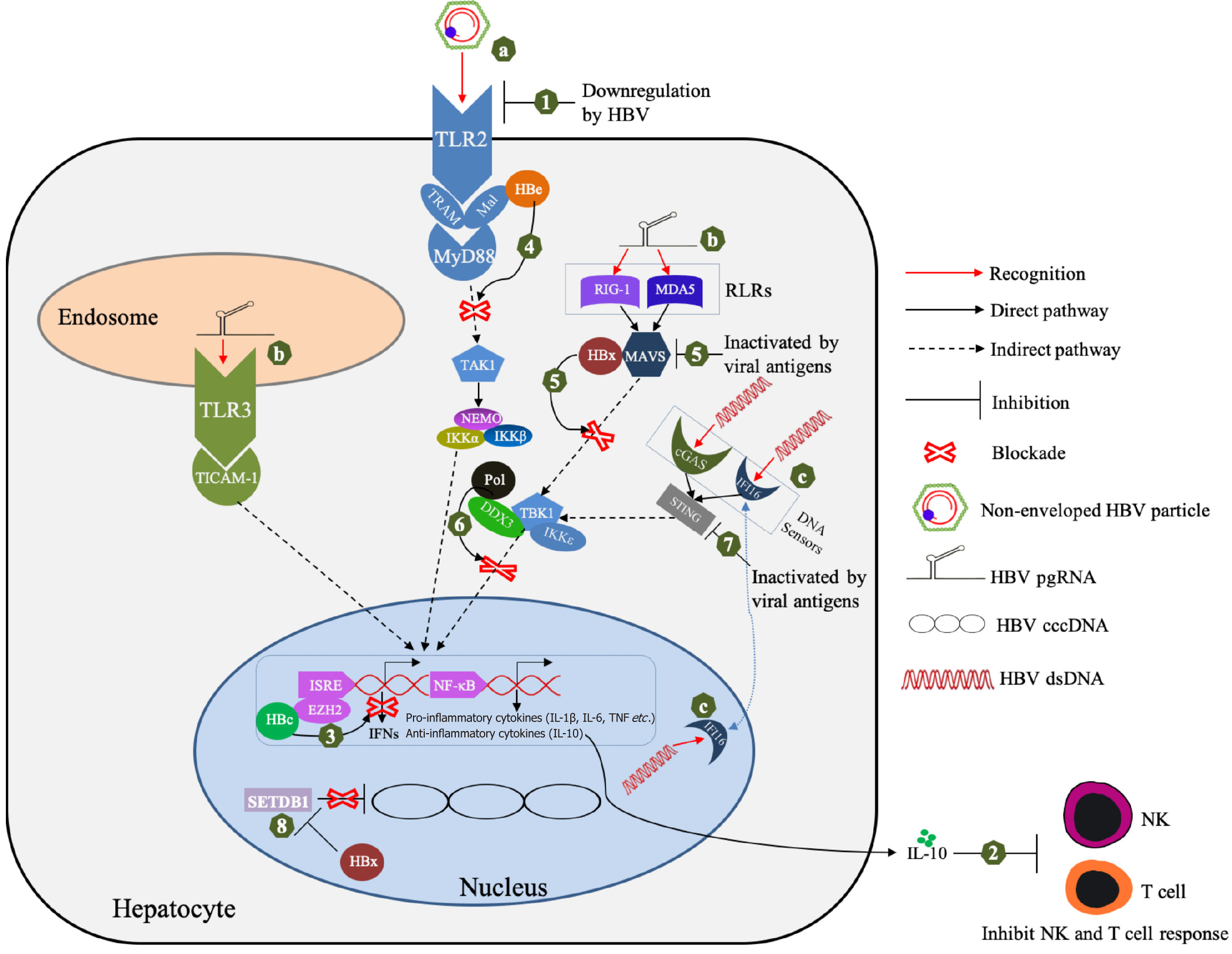Copyright
©The Author(s) 2025.
World J Hepatol. Jun 27, 2025; 17(6): 104533
Published online Jun 27, 2025. doi: 10.4254/wjh.v17.i6.104533
Published online Jun 27, 2025. doi: 10.4254/wjh.v17.i6.104533
Figure 1 Overview of the anti-hepatitis B virus hepatic innate immunity in hepatocytes.
The viral components of hepatitis B virus (HBV) can be recognized by diverse pattern recognition receptors in hepatocytes, for example: HBV core protein in nucleocapsid can be recognized by Toll-like receptor (TLR)-2 Located on cell membranes (a); the epsilon stem-loop structure in HBV pregenomic RNA can be recognized either by RIG-I-like receptors (RLRs); RIG-I and MDA5 in cytosol or by TLR3 Located on endosome membrane (b); the HBV double-strand DNAs can be recognized by DNA sensors like cGAS or IFI16 (c). The recognition triggers the downstream antiviral innate response. HBV have evolved efficient strategies to counteract the innate response, including: (1) Downregulation of TLRs, damping the recognition of HBV infection; (2) Induce the production of IL-10 that can impair natural killer and T cell function; (3) Epigenetic downregulation of interferons (IFNs) and IFN-stimulating genes expression by recruiting the histone-methyltransferase EZH2 onto targeted gene promoters; (4) HBe binds to TRAM and Mal to disrupt the TLR2 signaling pathway; (5) The interaction of viral antigens (HBx, HBs and HBe) with mitochondrial antiviral signaling protein disrupts RLRs signaling pathway; (6) HBV P protein binds to DEAD-box RNA helicase 3 and block its interaction with TANK-binding kinase 1/IκB kinase epsilon, subsequently inhibiting IFN-β production; (7) Inactive STING with viral antigens (e.g. HBV P protein) to disrupt DNA sensors pathway; and (8) HBx relieves the histone methyltransferase SET domain bifurcated histone lysine methyltransferase 1-associated transcriptional silencing of covalently closed circular DNA, thereby promoting viral replication.
- Citation: Chen P, Zhao J, Chen NK, Chen ZY. Hepatocyte-intrinsic innate immunity in hepatitis B virus infection: A focused review. World J Hepatol 2025; 17(6): 104533
- URL: https://www.wjgnet.com/1948-5182/full/v17/i6/104533.htm
- DOI: https://dx.doi.org/10.4254/wjh.v17.i6.104533









